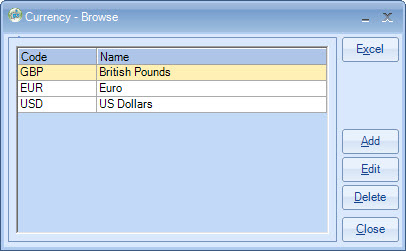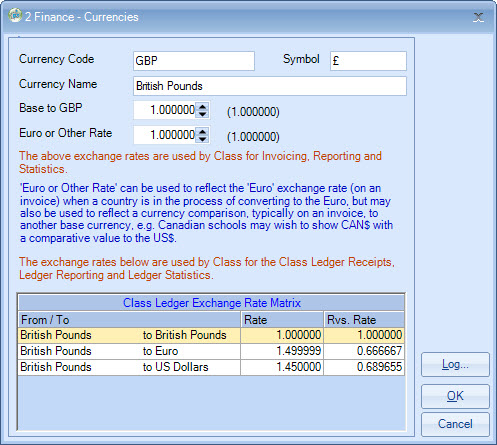|
Currencies
|
 
|
Currencies
Where are the Exchange Rates
used? "Top" - used
for invoicing, reporting and stats. "Bottom"
exchange rates (Class Ledger Exchange Rate Matrix) 3. Exchange rates are not applied to the following Ledger
report: In practise the top and bottom rates of exchange will be
the same, but 2 rates exist for backwards compatibility.

The exchange rate table has 2 sets of rates - this
is for backwards compatibility to older versions of Class, and unless you have
specific reasons for using different rates, then the "top" exchange rates should
be the same as the "bottom" exchange rates.
Exchange rate Base to GBP:
The stats section also provides
additional exchange rate options.
Used for:
1.
Recording the "rate to base" at time the invoice is produced. When you update
your exchange rates (April and November), this will affect the "base" value held
in the invoice, and therefore the Ledger Nominal Analysis.
2. Ledger
Reports/Statistics
Eg. A - Control Totals / B - Nominal Analysis (Period End
Accounting)
A - Receipt Reporting
B - Unallocated Cash
C - Ledger
Balances/Reconciliation
D - Ledger Arrival Prepayments
"Euro or Other
Rate" can be used to reflect the "Euro" exchange rate (on an invoice) when a
country is in the process of converting to the Euro, but may also be used to
reflect a currency comparison, typically on an invoice, to another base
currency, eg. Canadian schools may wish to show CAD$ with a comparative value to
the USD$.
Copyright 2013
Infospeed Limited